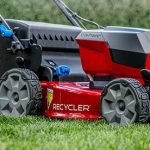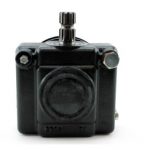A popular idea that has sprung up in recent times in regards to lawn care is that of fertigation. It’s not a common or well-known term as of yet, but it could be the future for residential lawns, commercials lawns, golf courses, and more. Is it for the individual? Let’s look at what fertigation is, and what needs to be considered as far as implementing it in your residential application.

Fertigation, courtesy Dwight Sipler via Flickr
What is Fertigation?
Fertigation is the delivery of nutrients along with water through irrigation systems. While this idea has been used in commercial agriculture and horticulture for a few years now, it has not been adapted to residential use until recently. This has come through the improvements in technology used in drip and spray irrigation systems that can now cope with delivering the combination of water and nutrients.
How Does Fertigation Work?
Fertigation works through the dissolving of soluble fertilizers into the water supply. Since the nutrients are already dissolved in the water supply when they are delivered to the plants, they don’t have to be dissolved by water over time.
What are Advantages of Fertigation?
As with any new method or technology, there are advantages and disadvantages in the use of fertigation.
- It provides for precise control of nutrient balance and concentration.
- The application of nutrients can be controlled and altered through the various stages of plant growth.
- The slow release reduce the leaching of chemicals into the water supply.
- Direct release to the root of the plant in an already-soluble form prevents fertilizer run-off.
- Reduces total amount of fertilizer, chemicals, and water needed thanks to a more efficient delivery option.
What are Disadvantages of Fertigation?
Up until now, everything about fertigation sounds pretty rosy. There are a few drawbacks, though:
- Fertigation requires more labor, as the solutions must be mixed, instead of applying a time-release fertilizer once and letting it work over time.
- Fertigation relies on being able to use water and to irrigate. In areas that can experience periods of drought and times when water usage is limited, this could stop the delivery of nutrients.
- Too much fertigation can poison the soil and damage plants.
- Chemical reaction from the fertilizer can corrode an existing fertilizer system.
What Needs to be Considered in Fertigation?
After looking at the advantages and disadvantages, there is still more to consider. The installation and upkeep of a fertigation system can be laborious, and it may require a high initial investment. On top of that, you’ll have to think about:
- Local water quality and how it may have to be treated.
- Type of soil that is being fertigated.
- The daily nutrient consumption of the plants and the appropriate materials needed.
- Alteration or construction of the fertigation system to provide for even nutrient distribution.
So is Fertigation for You?
You’ll have to decide on your own if fertigation is the right move for your lawn or garden. It is certainly one of the most environmentally responsible ways to deliver nutrients to your lawn, but it might not be the most feasible way to go about things. Consider these factors, and even talk to a local lawn and garden expert before taking the next step.






